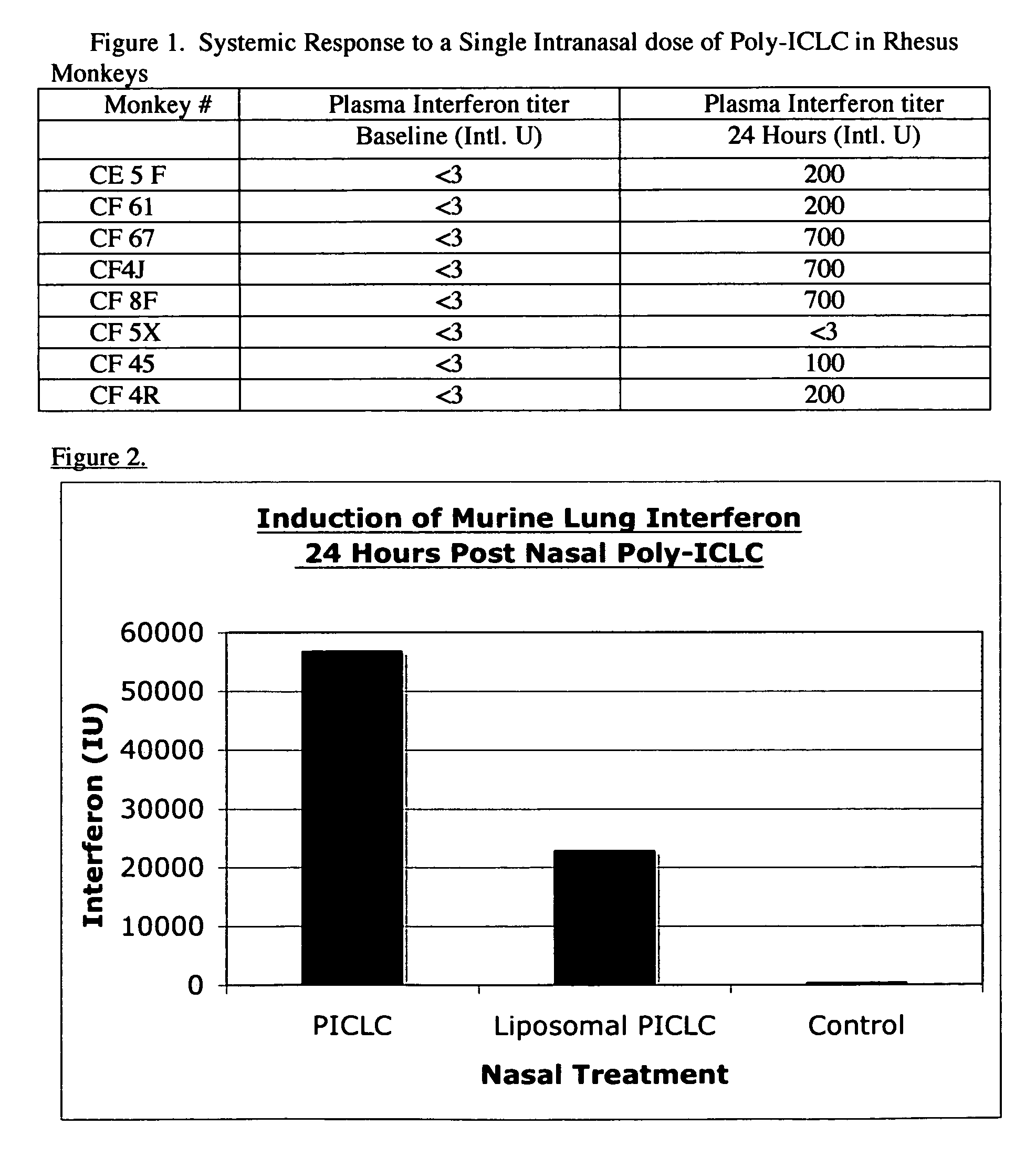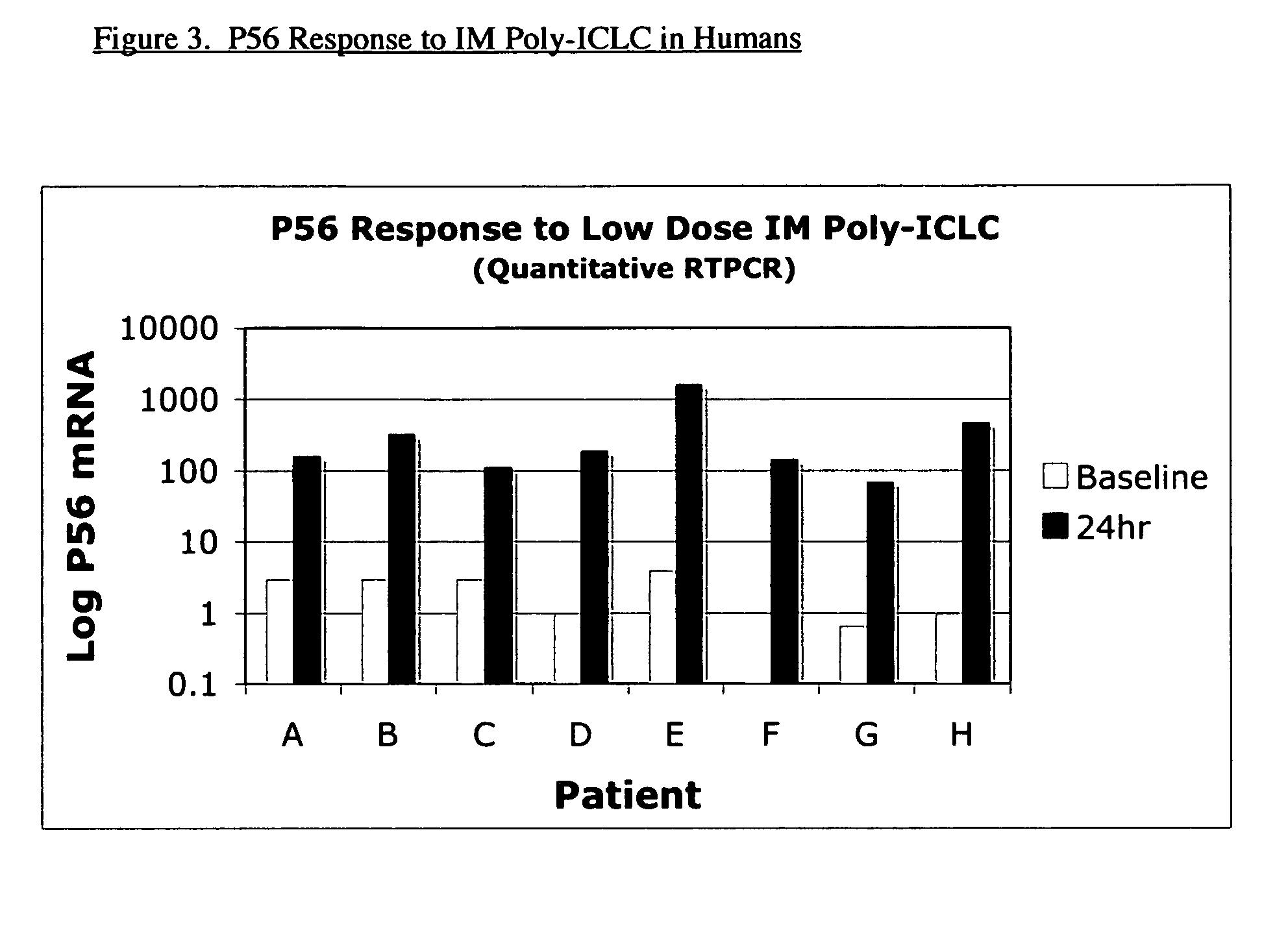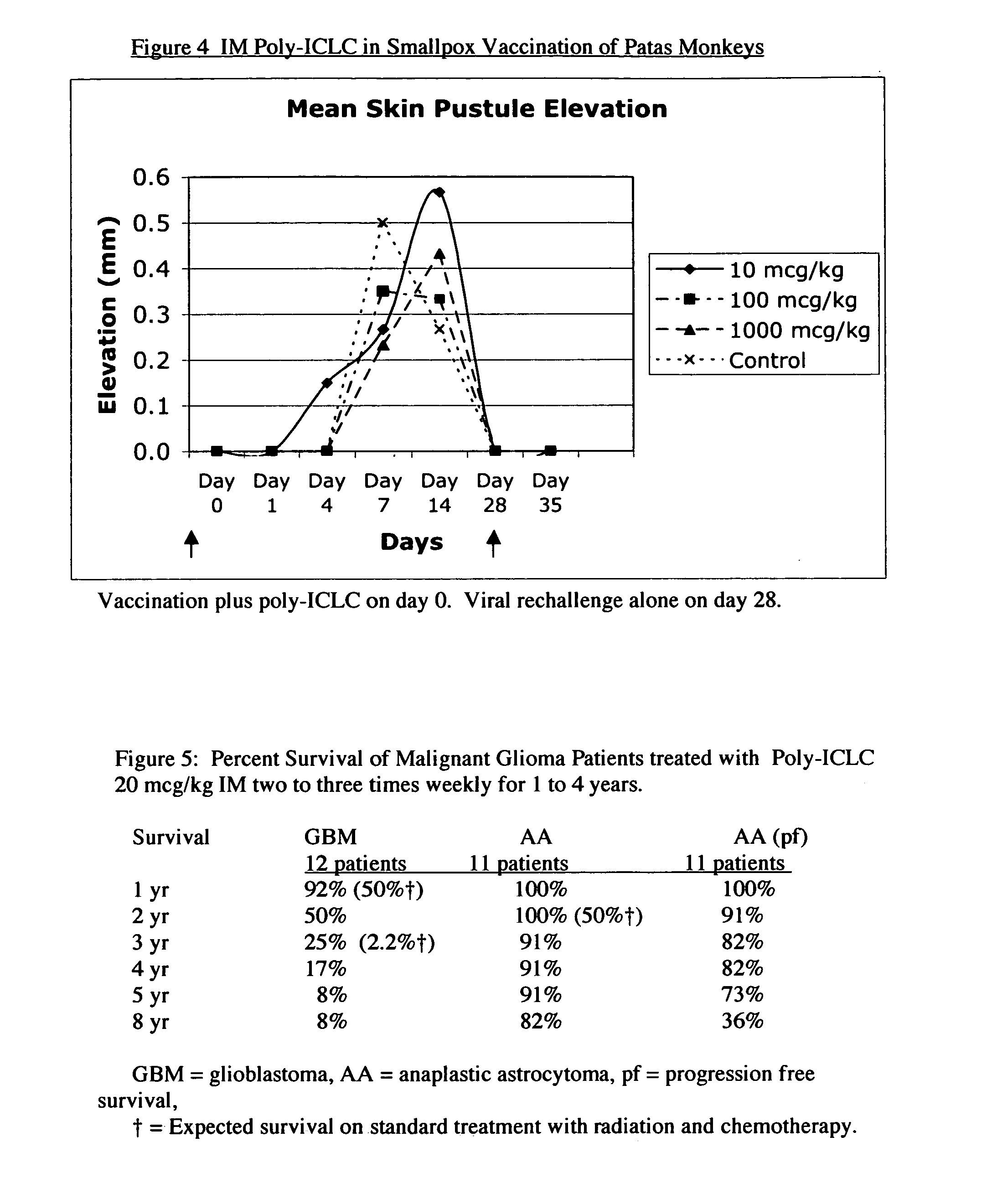Clinical method for the immunomodulatory and vaccine adjuvant use of poly-ICLC and other dsRNAs
a technology of immunomodulatory and vaccine adjuvant use, which is applied in the field of clinical administration of pharmaceutical compounds, can solve the problems of lack of inhibition ability, insufficient treatment for many of interferon alone, and inability to translate into practical therapeutic application
- Summary
- Abstract
- Description
- Claims
- Application Information
AI Technical Summary
Benefits of technology
Problems solved by technology
Method used
Image
Examples
Embodiment Construction
)
[0058]It is a further object of the invention to provide an improved method for use of poly-ICLC in the management of autoimmune conditions, including multiple sclerosis.
[0059]Further applications include similar regulation of immune responses for veterinary applications in various mammalian animal species, poultry, and other birds.
[0060]It is a further object of the invention to provide a concept for developing alternative dsRNA structures that result in differential immunomodulatory, gene regulatory and other biological effects that can be tailored to specific disease entities.
BRIEF DESCRIPTION OF THE DRAWINGS
[0061]FIG. 1 is a table showing Systemic Response to intranasal administration of poly-ICLC in Rhesus Monkeys, indicating activation of iBALT. One consideration is the duration of exposure of the nasal and bronchial mucosa to poly-ICLC or other dsRNAs. Animals were anesthetized prior to nasal administration, ensuring exposure of the full dose for at least 30 minutes to mucos...
PUM
| Property | Measurement | Unit |
|---|---|---|
| Mass | aaaaa | aaaaa |
| Time | aaaaa | aaaaa |
Abstract
Description
Claims
Application Information
 Login to View More
Login to View More - R&D
- Intellectual Property
- Life Sciences
- Materials
- Tech Scout
- Unparalleled Data Quality
- Higher Quality Content
- 60% Fewer Hallucinations
Browse by: Latest US Patents, China's latest patents, Technical Efficacy Thesaurus, Application Domain, Technology Topic, Popular Technical Reports.
© 2025 PatSnap. All rights reserved.Legal|Privacy policy|Modern Slavery Act Transparency Statement|Sitemap|About US| Contact US: help@patsnap.com



